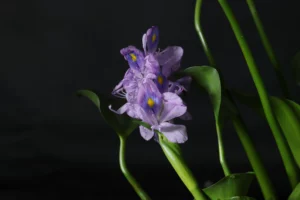Throughout human history, our relationship with the natural world has played a fundamental role in shaping our cultures, beliefs, and spiritual practices. Among all the elements of nature, plants have unique and deeply rooted meanings in different cultures around the world. This sacred connection between humans and plants goes beyond its practical purpose. It deals with the areas of spirituality, symbolism, and reverence. Modern human life and technology have further separated humans from nature and trapped them in a never-ending cycle of robotic and mechanical life. Trees have been huge pillars that have been maintaining a deep relationship with nature and humans for thousands of years. Many stories of trees have influenced humans and may have contributed to the dominance of modern humans. So why can’t they listen to the stories plants tell us? Let’s go on a journey to discover how trees began to tell stories.

Can you be without talking to anyone for days? I don’t think you can! You always need to express your feelings and share what you have with others. As a multi-cellular being, trillions of your cells in your body communicate with each other to keep you alive by regulating body functions. So, the plants too need to keep themselves alive by maintaining their metabolic activities. Plants too, communicate with each other to build up interactions with the outer environment to solidify their existence as most living animals. From the beginning of human civilization, humans used to build strong relationships with trees. Most of the well-renowned philosophies have originated in a nature-centric manner connected to the trees which are also living beings.
Spiritual, Cultural connection with the plants
In recent times, the spiritual and cultural importance of plants has evolved, with many people turning to plants for healing, guidance, and spiritual connection. As people reconnect with nature and seek alternative forms of healing and spiritual growth, practices such as herbal medicine, and the use of plant relatives in spiritual rituals are experiencing a resurgence in popularity. In addition, people in the past believed that plants emit special signals that can treat mental and physical ailments.
Damanhur’s Singing Plants is a living example of the spiritual connection between plants and people using music as a means of communication. Since the 1970s, they have been experimenting with communication between plants and humans based on spiritual foundations.
Plants are considered mediators between the material and spiritual worlds in various belief systems. The idea that plants have a spiritual essence is not limited to any particular religious tradition. Rather, it is a common thread that runs through many cultures. This connection is often expressed through rituals, and the use of plants to induce altered states of consciousness.
The cultural and spiritual relationship between plants and humans has a rich and diverse history spanning all civilizations and eras. Throughout history, plants have played a central role in the spiritual beliefs and practices of various cultures, often serving as symbols of life, healing, and connection to the natural world.
For example, the indigenous peoples of the Amazon believe that the herbal beer ayahuasca allows them to communicate with forest spirits and gain insight into the natural world and their place in it. Similarly, the use of symbiotic plants in various shamanic traditions around the world is rooted in the belief that these plants can provide access to higher dimensions and spiritual wisdom.
Intelligence of the plants
Plant communication is a complex and interesting topic that has attracted the attention of scientists for many years. Much remains unknown about the mechanisms by which plants communicate with each other, but recent research is shedding new light on this fascinating topic. As we learn more about how plants communicate, we may gain a deeper understanding of the natural world around us and the complex relationships that exist between different plant species.
The concept of plant communication and intelligence is also a recurring theme in various spiritual and philosophical traditions.
The idea of plants as sentient beings capable of communicating and responding to human emotions and intentions has been popular with philosophers and spirits throughout history, in various aspects of mythology, folklore, and philosophical traditions around the world. has been explored in the writings of leading leaders. Many cultures have developed stories and beliefs that reflect deep spiritual and philosophical connections between people and plants.
The folklore around the trees
In Western mythology and folklore, plants are often depicted as magical sentient beings who can communicate with humans. For example, in Greek mythology, plants such as laurel and myrtle were associated with the gods and were believed to possess divine wisdom. The concept of plant spirits and their ability to convey messages to humans is a recurring theme in many Western myths and legends.
Native American cultures have a rich tradition of using plants in both practical and spiritual ways. For many tribes, certain plants, such as sage (Salvia officinalis), cedar (Cedrus), and sweetgrass (Hierochloeodorata), are considered sacred and are used in rituals, cleansing, and purification rituals. These plants are believed to have unique healing properties and can help create a connection between people and the spiritual realm.
In Hinduism, certain plants and trees have important spiritual meaning. The sacred Tulsi (Ocimum tenuiflorum), also known as the sacred basil plant, is believed to be the earthly manifestation of the goddess Tulsi and is worshiped by millions of Hindus. Additionally, the Peepal tree (Ficus religiosa), also known as the Bodhi tree, has spiritual significance as it is believed to be the tree under which Buddha attained enlightenment.
The Celts deeply worshiped trees, believing them to be a bridge between the earthly and spiritual worlds. Druids, ancient Celtic priests, associated certain trees with various properties and used them for divination, healing, and connecting with the gods. For example, the oak tree (Quercus robur) was associated with strength and endurance, and the yew tree symbolizes transformation and rebirth.
African cultures have a long history of using plants for spiritual and healing purposes. Various rituals using plants are performed to connect with ancestors and the spirit world. The iboga plant (Tabernanthe iboga), native to Central Africa, is used in the Bwiti tradition for spiritual enlightenment and healing.
In ancient civilizations such as the Egyptians, Greeks, and Romans, plants were revered for their medicinal properties and were often used in religious ceremonies and rituals. For example, the ancient Egyptians believed that certain plants, such as the lotus flower (Nelumbo nucifera), had spiritual meaning and were associated with rebirth and the afterlife. In ancient Greece, plants were closely associated with mythology and were believed to be inhabited by gods and nature spirits.
Science and Modernity
Throughout history, philosophers and thinkers have wondered about the nature of intelligence and communication in plants. For example, the German philosopher Johann Wolfgang von Goethe wrote extensively about the “sensory perception” of plants and their ability to respond to their environments. His studies of plant morphology and philosophical considerations about the interconnectedness of all living things influenced the way we understand trees and their interactions with humans.
In modern science, researchers are also beginning to study how plants communicate and interact with their environment. For example, the field of plant neurobiology sheds light on the complex ways in which plants sense and respond to their environments, challenging traditional notions of plant intelligence and communication.




